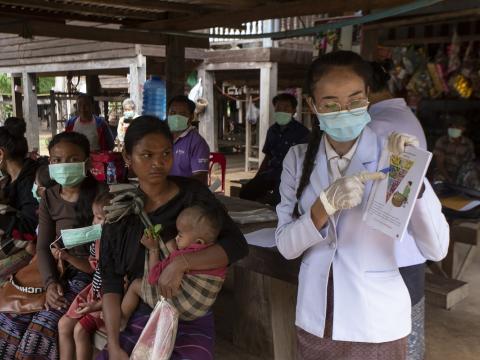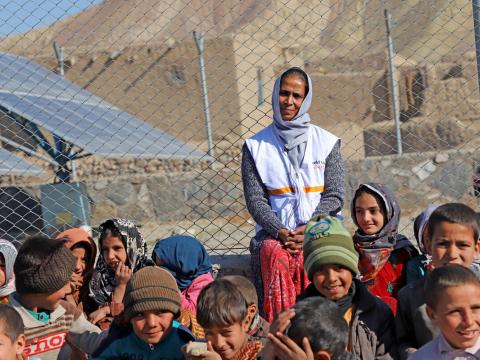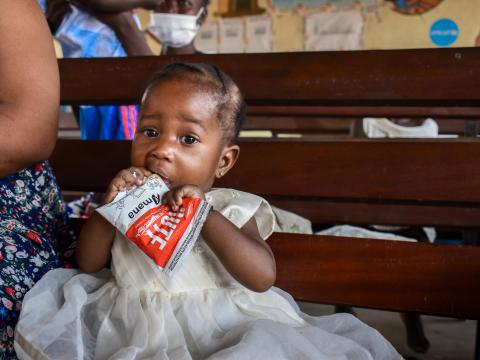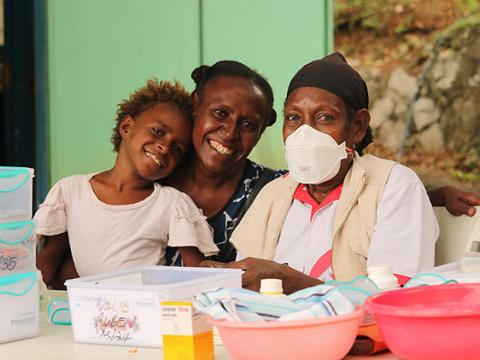
Universal health coverage is possible, but still years away
Kuber Adhikari says Laos typifies several of the challenges of achieving universal health care by the end of the decade.
10 January, 2023
When it comes to achieving universal health coverage (UHC) globally, there’s a lot of bad news. An estimated 100 million people globally fall into extreme poverty because of out-of-pocket expenditures on health care. There is a massive disparity between the low-income and high-income countries on accessing and utilising health services. Health indicators such as maternal and child mortality and malnutrition are still alarming for many low-and-middle-income countries.
Just last month, the world celebrated Universal Health Coverage Day with the slogan “Build the world we want: A healthy future for all”. Given good health is a fundamental human right one might imagine the world might be on track to achieve UHC by 2030—the deadline for all the Sustainable Development Goals. Sadly, that’s not the case, as evidenced by the situation in the Lao People’s Democratic Republic (Laos) where I live and work.

Government commitment
Despite the government committing to achieve universal health coverage by 2025, the challenges to reaching this have proven to be overwhelming, particularly because of an overreliance on health financing from development partners, an inadequate workforce, and poorly functioning health information systems. As a result, services remain out of reach for too many vulnerable families.
Even with the establishment of different social protection schemes, out-of-pocket expenditure is still extremely high for people, representing about 42% of all health expenses. Costs include medicines unavailable on the insurance scheme, and travel to health service providers plus accommodation while there. Although the national UHC index has doubled from 2000 to 2017 (moving from 25 to 51), Laos is still only halfway to achieving universal health coverage and remains one of the lowest in East Asia.
A National Health Insurance Scheme was introduced in 2016 in an attempt to break financial barriers and expand the coverage of health services to hard-to-reach populations. This was an encouraging initiative and a positive sign of change, but it has unfortunately faced multiple challenges and complexities—including not everyone fully understanding the insurance scheme and limited funds available for insurance. As a result, the scheme has yet to reach marginalised populations as expected.
Local challenges
During my last visit to one of the remote districts of Southern Laos, I saw that health centers (the lowest level of health care service providers) are very far away from remote villages creating a situation where families are having to self-assess their illnesses to determine if their symptoms are severe enough to make the long journey to find health provision.
Families usually only visit the centres when someone in the household is very sick. They do not have regular access to preventive and promotive services like child immunisation, growth monitoring, or health education counselling—which would go a long way to prevent illness in the first place and help maintain good health. Immunisation coverage is shockingly below 70%, and growth monitoring is highly irregular, increasing the risk of children facing malnutrition and diseases that are easily preventable with a vaccine.

Building blocks to success
The key to ensuring universal health coverage, in Laos at least, is strengthening primary health care access on each fundamental building block of the health system consisting of governance, legislation, finance, health commodities, human resources, and technology. They are all interlinked and require a strong commitment, coordination, and collaboration between the Government of Lao PDR and development partners.
This would ensure proper planning and budgeting for health; provide transparency of health information and accountability of all the stakeholders; guarantee appropriate resources with sufficiently trained and equipped health workers; as well as sustainable management of health financing. All of this would ensure the most vulnerable are not left behind and able to access quality healthcare, as is their right.
Evidence of impact brings hope
While reaching universal coverage by 2030 seems daunting and far off for Laos, hope for a healthier future is still alive. There is no secret or magic wand to improve or achieve universal healthcare. A comprehensive approach to strengthening primary healthcare is key to achieving UHC. However, we do know that strengthening integrated outreach clinics is one approach that has proven to significantly and rapidly contribute to increasing UHC among marginalised and vulnerable communities.
World Vision works with 66 health centres in Laos to provide regular outreach clinic services in 171 remote villages. These mobile clinics arrive every quarter to provide health services directly in the village and give mothers and children from hard-to-reach areas such vital treatment as child immunisation, monitoring children's growth, and health education and antenatal care for mothers.

To be able to run this activity, World Vision has boosted the capabilities of 137 health workers in the communities, training them in Integrated Management of Acute Malnutrition and Community-Based Integrated Management of Newborn and Childhood Illnesses.
These integrated interventions have proved effective: a recent assessment of an EU-funded grant reports that immunisation of children increased from 60.8% in 2019 to 72.4% in 2022. At the same time, the percentage of pregnant women receiving iron/folic acid supplements (essential to prevent mortality during birth) increased from 70.4% to 89.4% where World Vision ran these activities with the Ministry of Health. With stronger and broader monitoring of mothers' and children's health in hard-to-reach communities, and the possibility to correctly identify and treat their illnesses, we and our partners give the most vulnerable children and their carers a chance for a better future.
To learn more about World Vision’s work in Lao PDR, please follow the Facebook page and visit the website.
Kuber Adhikari is seasoned development professional from Nepal, with more than 10 years of experience in planning, designing, and managing integrated health and nutrition, early childhood development, water, hygiene and sanitation (WASH), health system strengthening, humanitarian and disaster risk reduction programmes. He is currently working for the World Vision International – Lao PDR office.


